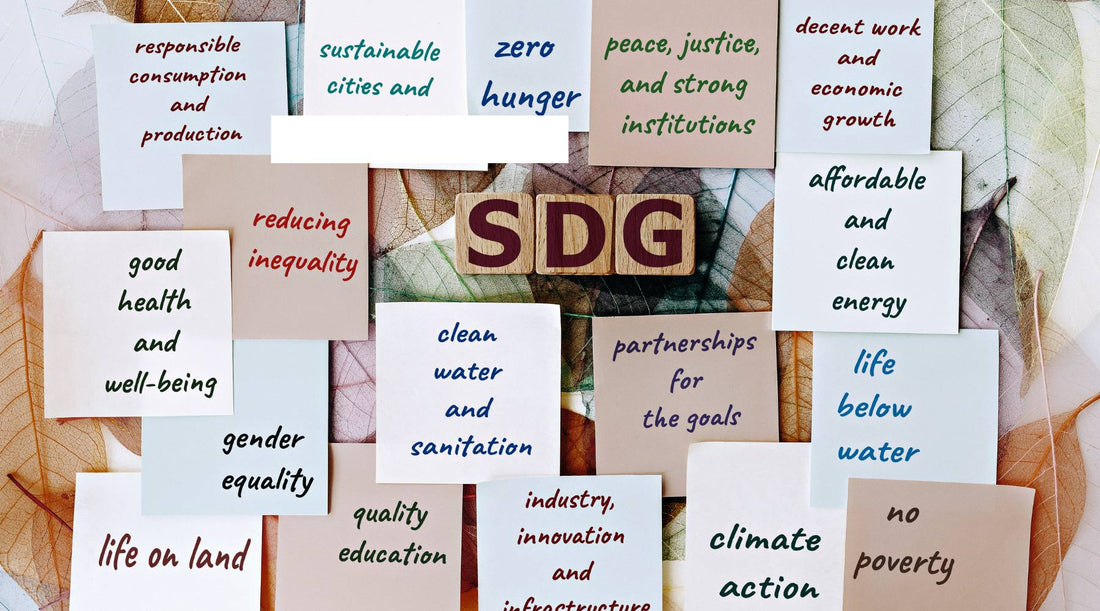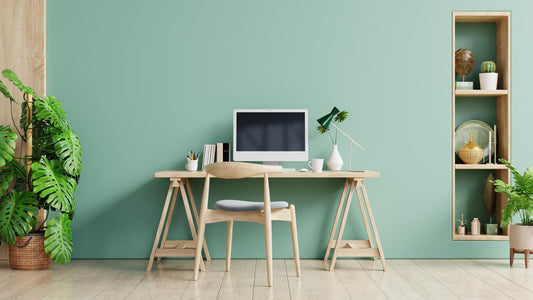
Do We Need Sustainable Development Goals?
Share
The Sustainable Development Goals (SDGs) are a global call to action. They give hope and inspire equal growth. The United Nations established them in an effort to improve the state of the globe. But how effective have they been? And do we even need them?
End extreme poverty, combat injustice and inequity, address climate change—there are so many! The Sustainable Development Goals are significant, potentially game-changing targets that will require collaboration between businesses, national and international authorities, as well as world leaders.

Even though we are far from achieving them, we still need them on our side for an equal and prosperous world. Hence, in this blog post, we will discuss why the SDGs are crucial for building a brighter future for everyone.
What Are the Sustainable Development Goals?
We need them to meet the demands of the present without compromising the ability of future generations to meet their own needs. Sustainable development refers to the growth of towns, businesses, land, and cities—the kind of growth that is long-lasting and does not further deplete or degrade resources.
Coupled with climate change in action and impacting more and more people, the SDGs have become necessary. Why? In essence, these interdependent goals serve as a blueprint for a collaborative effort between developed and developing countries, aiming for economic prosperity, environmental protection, and global well-being. SDGs aspire to raise everyone’s standard of living while reducing the amount of natural resources used. They fight to preserve the earth’s resilience for the benefit of coming generations.

History is filled with cautionary tales of societies that prioritized short-term gain over long-term sustainability. We’ve seen environmental degradation and social inequalities widen, jeopardizing the well-being of entire populations. As a result, the SDG targets set by the United Nations are a beacon of hope and a course of correction, guiding us towards a more sustainable world by 2030.
“The Sustainable Development Goals (SDGs), also known as the Global Goals, were adopted by the United Nations in 2015 as a universal call to action to end poverty, protect the planet, and ensure that by 2030 all people enjoy peace and prosperity.”
UNDP
In 2015, 193 countries signed the policy framework for the 17 Sustainable Development Goals, which is overseen by the International Monetary Fund (IMF).
More specifically, the IMF overlooks the finances of the SDGs. Consequently, five pillars must be acted on: people, prosperity, planet, peace, and partnership. We’ll discuss them in detail in the upcoming sections.
Why is Sustainable Development Important?
Economic, environmental, and social differences pose a greater threat to humanity than we can ever imagine. The Sustainable Development Goals (SDGs) aim to change this and transform our world. They are a call to action to end the injustice that exists in the world despite the growing industrialization and developments.

Just like India and China, we can expect other countries and the remaining untouched groups of people to achieve proper shelter, health and food to rise out of poverty. To give you an instance, India has successfully taken millions out of extreme poverty, the poverty rate of India has reduced from 24.85% in 1993 to 14.96% in 2021. India has also been among the first nations to sign such treaties and policies. However, it still ranks 111th out of 125 countries in the Global Hunger Index 2023, which is shocking and saddening at the same time.
We can only hope that with these goals in effect, by 2030, everyone can live a life with abundant food, a proper roof over their heads, good health and happiness.
The Harsh Reality
According to the United Nations, in 2020, the COVID-19 pandemic made 100 million people extremely poor. This sudden crisis put certain communities years back towards basic development, such as food and basic sanitation, particularly in developing countries. This proved to be a major setback towards the achievement of Sustainable and Millennium Development Goals.

The SDGs address many global issues, such as poverty, inequality, environmental degradation, climate change, peace, and justice. They give people, companies, and governments a framework for working together to create a more sustainable and just society.
Gender equality is more than a goal in itself. It is a precondition for meeting the challenge of reducing poverty, promoting sustainable development and building good governance.
Kofi Annan
The Execution of the SDGs Pillars
In light of this, people stand for fostering inclusion by reducing gender and income inequality. The first five SDGs are completely people-oriented and try to solve basic needs like food, shelter and poverty. Specifically, the first Sustainable Development Goal under the people pillar is No Poverty, followed by Zero Hunger, Good Health and Well Being, Quality Education and the fifth SDG Gender Equality.

Prosperity looks at the technological and economic aspects by which developing countries can grow. The second pillar, prosperity, imbibes five SDGs from 7 to 11. The seventh goal is Affordable and Clean Energy, followed by Decent Work and Economic Growth, Industry Innovation and Infrastructure, Reduced Inequalities, and lastly, Sustainable Cities and Communities.
The third pillar, the planet, tackles global climate change and all its issues. The sixth goal, Clean Water and Sanitation, works towards the betterment of the planet, along with SDGs 12 to 15. These are Responsible Consumption and Production, Climate Action, Life Below Water, as well as On Land.
Furthermore, proper governance and policy changes help reduce loose ends and corruption at institutional levels, fostering peace around the globe. The 16th goal, Peace, Justice, and Strong Institutions, aims to do the same through strict regulations.
Obviously, no goals can be achieved on an individual basis. So, by financing the objectives of the Sustainable Development Goals on a global level, considering taxes and other aspects, partnerships, the fifth pillar, overlooks its success. The final goal, SDG 17, Partnerships for the Goals, aims to achieve the same by 2030.
Innovative Solutions for Achieving Sustainable Development Goals: A Roadmap for Progress
We have for you a roadmap that will easily help you contribute to achieving the SDGs. Below are the 17 SDGs, along with a very simple, individualistic, and sustainable task associated with each.

If you follow these, you could be able to help engage in all the SDGs together and showcase them to your eco-friendly community. Moreover, the facts associated with it will motivate you further. Excited?
You can Make SDGs a Reality
The idea that the typical person can have an impact seems unattainable. Must you just give up? Not at all! You are the first who can make a change.
Really? Every person on the planet, even the most apathetic and slothful, contributes to the answer because thousands of people who make small changes will have a great impact. Thankfully, we can all make a few very simple changes to our daily routines that will help us do so. Here are just a handful of the numerous things you can do to have an effect:
1. People Are at the Forefront

| SDG | The Hard Reality | One Little Change You Can Make |
|
SDG 1: No Poverty |
The extreme poverty line is less than $2.15 per day. 700 million people live on the extreme poverty line. | Give away items you don’t use. Local nonprofits will repurpose your gently used furniture, books, and clothing. |
|
SDG 2: Zero Hunger |
122 million more people have gone hungry since 2019 as a result of various crises. | Don’t throw away food. If you are unable to consume it, freeze it or compost it. |
|
SDG 3: Good Health and Well-Being |
70% of social workers and health professionals worldwide are women. Almost 80% of all maternal deaths, stillbirths, and neonatal deaths that happen today could be prevented by increasing funding for midwives. | Eat well (fresh, local, home-cooked food; reduce processed food). Move your body daily. Take care of your mental wellbeing. You can also donate your blood. |
| SDG 4: Quality Education | Worldwide, 103 million young people lack basic literacy skills, with more than 60% of them being women. | Donate your used books, promote and take free online courses or mentor young people. |
| SDG 5: Gender Equality | One out of five girls are married before their 18th birthday. | Be aware of gender stereotypes, stand up against harassment when you encounter it or simply share the workload at home. |
2. Everyone Deserves A Prosperous Life

| SDG | The Hard Reality | One Little Change You Can Make |
| SDG 7: Affordable and Clean Energy | 675 million people still live in the dark. Out of five, four live in Sub-Saharan Africa. | Avoid using multiple devices, such as laptops and smartphones, at the same time, and switch off your appliances when not in use. |
| SDG 8: Decent Work and Economic Growth | The disproportion in the labour market affects more women than men. Women are paid up to 10-30% less. | Buy local. It will support national economic growth as well as local businesses and farmers. |
| SDG 9: Industry, Innovation and Infrastructure | Ninety per cent of the world’s population, or more than 4 billion people, lack an Internet connection. | Use social media and ask policymakers to prioritize sustainable infrastructure. |
| SDG 10: Reduced Inequalities | In 2016, the richest 1% of people in the world took home 22% of all income, while the bottom 50% received 10%. | Support companies that are inclusive of different marginalized groups and races via their employment and products. |
| SDG 11: Sustainable Cities and Communities | Only half of the global urban population has easy access to public transportation. | Commute sustainably. Use public transport, walk or bike. |
3. Our Planet is Our Home

| SDG | The Hard Reality | One Little Change You Can Make |
| SDG 6: Clean Water and Sanitation | More than 2 billion people still do not have access to basic hygiene facilities. | Do not waste or overuse water. Take quick showers and close the tap when not in use. |
| SDG 12: Responsible Consumption and Production | If everyone used energy-efficient lighting, we would save 120 USD per year. | Use energy-efficient lighting systems such as LEDs. |
| SDG 13: Climate Action | The sea levels are projected to rise up to 30 to 122 cm by the year 2100. | You can plant native trees to reduce carbon footprint. |
| SDG 14: Life Below Water | 40% of the ocean is affected by pollution and other human activities. | Reduce waste. The waste created on land ends up eventually in the oceans. |
| SDG 15: Life on Land | Agriculture is a direct source of living for more than 2.6 billion people. | Do not use harsh chemicals such as pesticides while growing plants or crops to maintain soil quality. |
4. A Goal for Peaceful Lives

| SDG | The Hard Reality | One Little Change You Can Make |
| SDG 16: Peace, Justice and Strong Institutions | A billion people lack the ability to establish their identity, making them legally ‘invisible.’ Approximately 625 million children under the age of 14, whose births were never recorded, are included in this. |
Support the unrecognised groups of people by gifting them real products that they actually need. |
5. Partnerships are the Backbone of SDGs

| SDG | The Hard Reality | One Little Change You Can Make |
| SDG 17: Partnerships for the Goals | After the epidemic, progress in closing the digital divide has halted. | Work with NGOs that support the Global Goals. Buy products with Fair Trade Labels. |
The objectives of the SDGs focus on significant concerns like eradicating poverty, safeguarding the environment, and guaranteeing equality for all. Their aim is to make the world more equitable and sustainable for all. Only once societies and communities are balanced on multiple levels will we be able to achieve true prosperity, growth, and justice for all.
Learn More about SDGs and Sustainability
10 Simple Sustainable Lifestyle Changes To Your Household
Green Entrepreneurs For A More Sustainable Future
20 Sustainability Facts That May Surprise You

Hi, I am Jahnvi Vyas. I have a Master’s in environmental science and my love for nature inspires me to be a more sustainable person. I am also an editor with a passion for graphics and video editing trying to learn new things.





1 comment
Excellent coverage on SDG. Useful. It is alright about five pillars of SDG. In my opinion ,addition of sixth pillar i.e. person,the typical,is necessary. Because ,if there is no more respect to head or key person in the organisation,the chances to failure the objects are more and is necessary to make daily and time to time fast changes.Seventh pillar may be Profit. In every activity related to SDG and even others, the profit must be their with result oriented work. Strictly no loss or any damage.Best Wishes.Dr.Patil A.S.India.